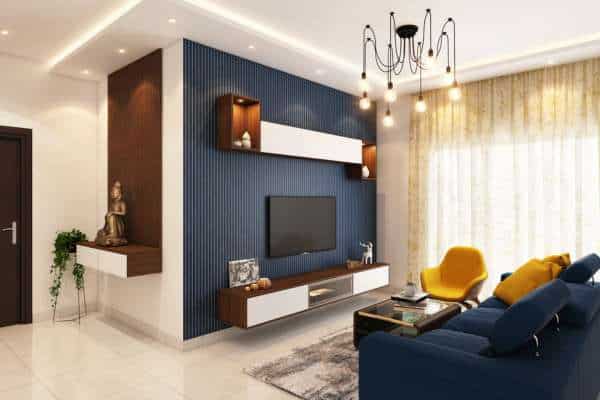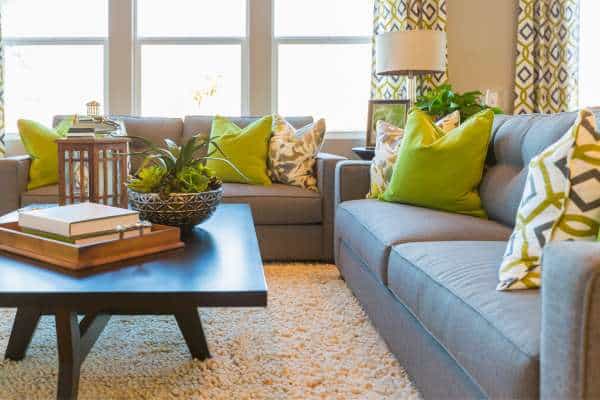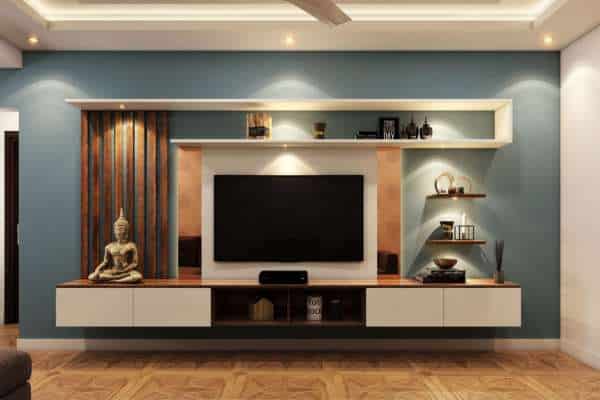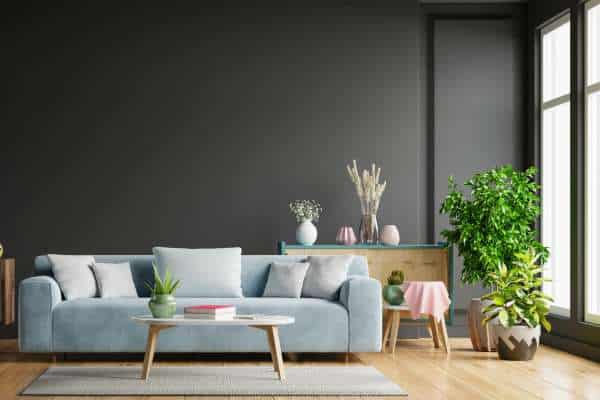Importance of living room furniture in interior decor. The living room serves as the central gathering space in our homes, where we entertain guests, relax, and spend quality time with family. The furniture we choose plays a vital role in creating a comfortable and aesthetically pleasing environment. Well-designed living room furniture can enhance the overall ambiance and functionality of the space. Purpose of the outline: provide professional decorating ideas. This article aims to provide you with professional decorating ideas to transform your living room. From furniture placement to color schemes, lighting fixtures to personal touches, each aspect will be explored in detail, helping you create a stylish and inviting space that reflects your personality and suits your lifestyle. Living Room Furniture Decorating Ideas
Furniture Placement

Consideration of room dimensions and layout. Before arranging your furniture, it’s important to consider the dimensions and layout of your living room. Take note of the available space, architectural features, and any focal points, such as fireplaces or large windows. This understanding will guide your decisions regarding furniture placement.
Placement options for sofas, chairs, and tables. Strategically placing sofas, chairs, and tables is essential for creating a comfortable and functional living room. Explore various options, such as arranging furniture in conversation areas, creating a focal point, or maximizing traffic flow. Experiment with different layouts until you find the one that suits your needs best.
Creating conversation areas and traffic flow. Consider the natural flow of movement within the room and ensure that furniture placement doesn’t obstruct the traffic flow. Creating conversation areas by grouping furniture together can encourage interaction and make the room more inviting. Pay attention to the balance between open space and furniture placement for a harmonious arrangement.
Color Scheme and Theme

Choosing a cohesive color palette for the room. Selecting a cohesive color palette is crucial for a well-designed living room. Consider the mood and atmosphere you want to create. Choose colors that harmonize with each other and align with your personal style. Experiment with shades, tones, and complementary colors to achieve the desired effect.
Selecting a theme or style to guide furniture selection. A theme or style can provide a guiding framework for your furniture selection. Whether you prefer a modern, minimalist look or a cozy, traditional feel, identifying a style will help you choose furniture that complements the overall aesthetic. Research different styles and find inspiration from interior design magazines, websites, and social media platforms.
Incorporating complementary colors and patterns. Once you’ve chosen a color palette and style, incorporate complementary colors and patterns to add depth and visual interest to your living room. Introduce patterns through upholstery, throw pillows, or area rugs. Consider the balance between solid colors and patterns to ensure a cohesive and harmonious look.
Sofa Selection

A. Determining the appropriate size and shape of the sofa. The sofa is often the centerpiece of the living room, so selecting the right size and shape is crucial. Consider the available space and the number of people who will be using it regularly. A larger room may accommodate a sectional sofa, While a smaller space may require a compact loveseat or a set of chairs.
B. Considering the material and durability of the upholster Choose upholstery materials that align with your lifestyle and maintenance preferences. Leather, microfiber. Or durable fabrics are excellent options for families with children or pets, As they are easy to clean and maintain. Pay attention to the quality and durability of the upholstery to ensure your sofa stands the test of time.
C. Adding accent pillows and throws for visual interest. Accent pillows and throws are fantastic accessories that can add a pop of color and texture to your sofa. Experiment with different sizes, shapes. And fabrics to create a visually appealing arrangement. Consider incorporating patterns or textures that complement the overall color scheme and style of your living room.
Accent Chairs

Choosing chairs that complement the sofa and overall style Accent chairs are versatile pieces of furniture that can enhance the style and functionality of your living room. Select chairs that complement the sofa in terms of color, design, And scale. They can be used to create
additional seating areas or as standalone statement pieces that add personality to the room.
Incorporating different chair styles for variety Incorporating different chair styles can add variety and visual interest to your living room. Consider mixing and matching chairs of various designs, materials, Or colors to create an eclectic or curated look. This approach adds depth and character to the space while allowing you to showcase your personal style.
Exploring options for swivel or recliner chairs If you desire added functionality and comfort, consider including swivel or recliner chairs in your living room. These chairs offer flexibility and convenience, Allowing you to rotate or recline as desired. Choose designs that blend seamlessly with the overall aesthetic of the room, ensuring a cohesive and balanced look.
Coffee and Side Tables

Selecting tables that match the style and scale of the room Coffee and side tables serve both practical and aesthetic purposes in the living room. Select tables that match the style and scale of the room. For a contemporary look, consider sleek and minimalist designs, while ornate or vintage-inspired tables can add a touch of elegance or charm to a traditional space.
Balancing functionality and aesthetics When choosing coffee and side tables, strike a balance between functionality and aesthetics. Consider your needs, such as storage space or a surface for placing drinks and snacks. Opt for tables with shelves, drawers, or hidden compartments to keep your living room organized while maintaining a visually pleasing environment.
Considering storage options such as drawers or shelves Storage options are particularly useful for keeping your living room clutter-free. Coffee tables with drawers or side tables with shelves offer storage solutions for books, magazines, or remote controls. Ensure that the storage options blend seamlessly with the design and style of the furniture, maintaining a cohesive look.
Entertainment Center or TV Stand

Incorporating a media console or TV stand into the design As the focal point of many living rooms, the television should be integrated seamlessly into the overall design. Consider incorporating a media console or TV stand that complements the style of the room. Look for designs that provide storage space for media devices, cables, and other electronic accessories.
Ensuring proper placement and size for the TV Proper placement and size of the TV are essential for optimal viewing comfort. Consider the viewing angles, distance from seating areas, and the overall scale of the room. Mounting the TV on the wall or using a stand that allows for height adjustment ensures A comfortable viewing experience for everyone in the living room.
Concealing cables and electronics for a clean look To maintain a clean and organized appearance, it’s important to conceal cables and electronic devices. Use cable management solutions such as wire covers or cord clips to hide unsightly wires. Additionally, consider furniture options with built-in cable management systems to keep your room clutter-free and visually appealing.
Lighting Fixtures

Utilizing a mix of ambient, task, and accent lighting Lighting plays a crucial role in setting the mood and atmosphere of your living room. Utilize a mix of ambient, task, and accent lighting to create layers of light. Ambient lighting provides overall illumination, task lighting serves specific purposes like reading or working, and accent lighting highlights architectural features or focal points.
Installing ceiling fixtures. Floor or table lamps. And wall sconces Install a combination of ceiling fixtures, floor or table lamps. And wall sconces to achieve a balanced and versatile lighting scheme. Ceiling fixtures can provide general lighting. While lamps and sconces offer focused or adjustable illumination. Consider the placement of lighting fixtures to ensure they enhance the overall design and functionality of the room.
C. Considering dimmers and smart lighting options for versatility To enhance flexibility and ambiance, consider installing dimmers or opting for smart lighting solutions. Dimmers allow you to adjust the brightness levels according to different activities or preferences. Smart lighting systems offer the convenience of controlling the lights through voice commands or mobile apps, allowing you to create personalized lighting scenes in your room.
Storage Solutions

A. Integrating storage furniture such as shelves or cabinets Storage furniture is essential for keeping your living room organized and free from clutter. Integrate shelves, cabinets, or bookcases into the design to provide ample storage space for books, decor items, or media accessories. Choose storage units that align with the style and scale of the room, enhancing both functionality and aesthetics.
B. Maximizing space with built-in bookcases or wall units If space allows, consider maximizing storage by incorporating built-in bookcases or wall units. These customized solutions can seamlessly blend with the architecture of the room while offering ample storage space. Built-in units also provide opportunities for displaying decorative items, artwork, or personal mementos, adding character to your living room.
C. Using decorative storage baskets or ottomans To add a touch of style while providing additional storage options, consider using decorative storage baskets or ottomans. These versatile pieces serve as both seating and hidden storage compartments. Opt for baskets or ottomans that complement the overall design, and use them to store blankets, magazines, or toys, keeping your living tidy and organized.
Window Treatments

A. Selecting appropriate curtains, blinds, or shades Window treatments contribute to the overall aesthetics and functionality of your living room. Choose curtains, blinds, or shades that suit your style and provide the desired level of privacy and light control. Consider the color, pattern, and texture of the window treatments to complement the furniture and enhance the overall design.
B. Balancing privacy, natural light, and aesthetics Find the right balance between privacy, natural light, and aesthetics when selecting window treatments. Sheer curtains or light-colored blinds can allow ample natural light while maintaining privacy. Thicker curtains or blackout shades offer additional privacy and light control, particularly for media viewing areas. Ensure that the window treatments harmonize with the overall design scheme of your living room.
C. Considering layering options for added depth and texture Layering window treatments can add depth, texture, and visual interest to your living. Combine curtains with blinds or shades to create a layered effect. Use different fabrics, patterns, or colors to add dimension and personality to the windows. Experiment with various combinations to find the perfect balance between style and functionality.
Wall Decor

A. Choosing artwork or mirrors that complement the room’s style Wall decor serves as a focal point and adds personality to your room. Choose artwork or mirrors that complement the style and color scheme of the room. Consider the size, scale, and subject matter of the artwork or the style and frame design of mirrors to ensure they harmonize with the furniture and overall decor.
B. Arranging wall decor in a visually appealing manner The arrangement of wall decor can greatly impact the overall aesthetics of your living. Experiment with different layouts, such as gallery walls or symmetrical arrangements, to find the most visually appealing composition. Consider the height at which you hang artwork or mirrors to create balance and harmony with the furniture and other elements in the room.
C. Incorporating shelving or floating shelves for additional display space Shelving or floating shelves offer additional display space for decorative items or personal collections. Incorporate shelves into your living design to showcase books, artwork, or cherished objects. Choose shelves that match the style of the room and consider their placement to create visual interest and balance within the space.
Rugs and Flooring

A. Selecting rugs that define different areas within the room Rugs not only add warmth and comfort to your living room but also define different areas within the space. Select rugs that suit the overall style and color scheme of the room. Consider the size, shape, and texture of the rug, and position it to delineate seating areas or anchor key furniture pieces, such as the sofa or coffee table.
B. Considering the texture and color of the rug in relation to furniture The texture and color of the rug play A crucial role in the overall design of your living. Choose a rug with a texture that complements the upholstery and other materials in the room. Consider the color of the rug in relation to the furniture and walls. Aiming for a harmonious and cohesive look that ties the elements of the room together.
C. Maintaining a cohesive flooring material throughout the space If possible, maintain a cohesive flooring material throughout your living room to create a seamless flow. Consistency in flooring material creates visual harmony and a sense of unity within the space. If you desire different flooring in specific areas, ensure that the transition between materials is smooth and complementary to the overall design.
Plants and Greenery

A. Incorporating indoor plants to add life and freshness Indoor plants bring life and freshness to your living room, creating a soothing and inviting atmosphere. Choose plants that thrive indoors and suit the lighting conditions of your living. Position plants strategically to add natural beauty and texture to the space, enhancing the overall decor.
B. Choosing low-maintenance plants suitable for indoor environments To ensure the longevity of your indoor plants. Choose low-maintenance varieties that can thrive in indoor environments. Consider factors such as sunlight requirements. Watering needs. And temperature tolerance. Incorporate a mix of plants with different shapes, sizes. And foliage to create an interesting and visually pleasing display.
C. Using planters or stands that complement the overall design Select planters or stands that complement the overall design and style of your living. Choose materials, colors, and shapes that harmonize with the furniture and decor. Consider the height and placement of the planters or stands to create visual balance and interest within the space.
Personal Touches

A. Adding personal items. Such As family photos or heirlooms Personalize your living room by adding items that hold sentimental value. Such as family photos or heirlooms. Display them in frames or incorporate them into gallery walls to add a personal touch to the space. Place them strategically to create focal points or conversation starters within the room.
B. Incorporating meaningful objects or souvenirs into the decor Incorporate meaningful objects or souvenirs into your room decor to tell a story and reflect your personality. Whether it’s artwork collected from travels or decorative items with sentimental value, these objects add depth and character to the space. Integrate them into shelving, tabletop displays, or wall decor arrangements.
C. Balancing personal touches with a clutter-free environment While personal touches are essential, it’s crucial to strike a balance and maintain a clutter-free environment. Avoid overcrowding the space with too many personal items. Opt for a minimalist approach and select a few key pieces that hold significance. Regularly assess and edit your collection to ensure a harmonious and visually pleasing living.
Conclusion
A. Recap of the key elements for living furniture decorating In conclusion, transforming your living room with professional furniture decorating ideas involves several key elements. These include furniture placement, color scheme and theme, sofa selection, accent chairs, coffee and side tables, entertainment center or TV stand, lighting fixtures, storage solutions, window treatments, wall decor, rugs and flooring, plants and greenery, and personal touches.
B. Encouragement to experiment, personalize, and enjoy the process As you embark on decorating your room, remember to embrace creativity and experimentation. It’s an opportunity to infuse your personal style and preferences into the space. Be open to trying new ideas And adapting them to suit your needs and tastes. Enjoy the process of creating A living room that reflects your unique personality And provides A welcoming And comfortable environment for you and your guests.
C. Final thoughts on the impact of a well-designed room A well-designed living has a significant impact on the overall ambiance and functionality of your home. It sets the tone for relaxation. Socializing. And personal enjoyment. By carefully considering furniture placement, color schemes. Lighting. And other key elements. You can create a space that is both visually appealing and conducive to comfortable living. A well-designed living becomes a sanctuary that enhances your everyday life and leaves a lasting impression on those who enter it.
Read more: Bedroom Furniture Design

